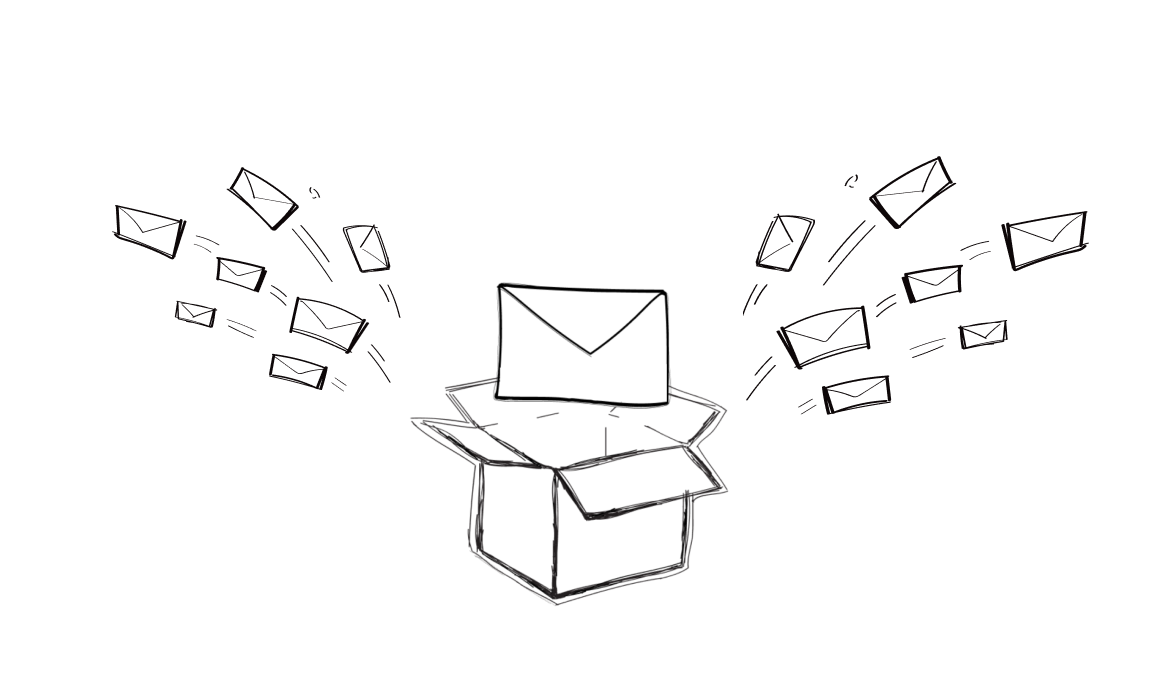Why do most email campaigns fizzle out? One-and-done emails don’t cut it anymore—they’re like throwing a dart blindfolded. Enter the cold email drip campaign, the B2B marketer’s secret weapon. With automated emails sent at just the right time, drip campaigns keep your message alive, turning cold leads into warm opportunities.
This isn’t just about sending emails; it’s about nurturing leads, addressing pain points, and delivering relevant content that keeps prospects engaged. Whether it’s reeling in new subscribers, re-engaging dormant leads, or speeding up a long sales cycle, drip campaigns get the job done.
So, how do you transform your outreach into a lead-generating machine? Stick around—we’re about to spill the secrets of drip marketing done right.
What Is a Cold Email Drip Campaign?
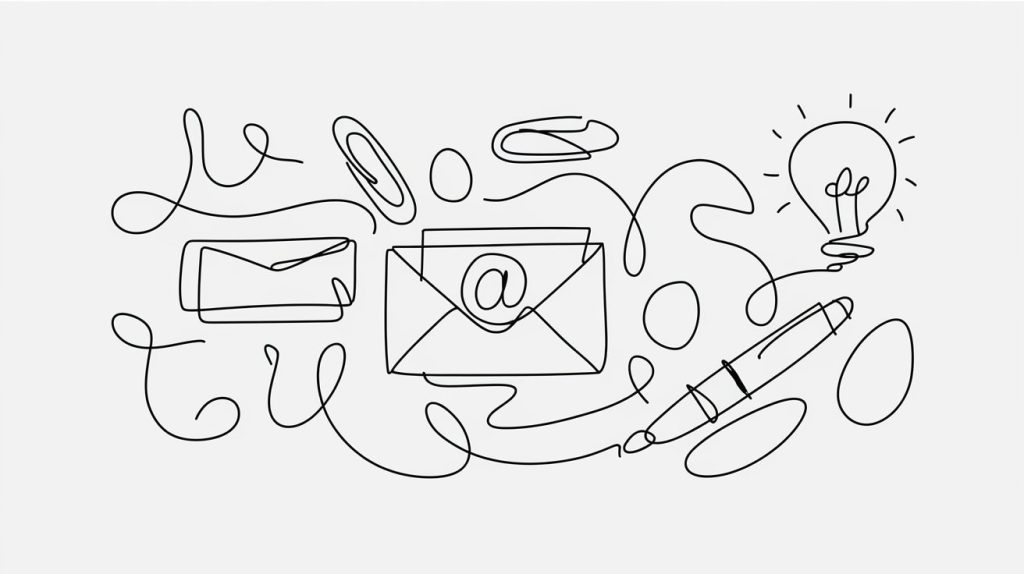
A cold email drip campaign is a marketing strategy that involves sending a sequence of personalized emails over time to guide potential customers through the sales funnel. Unlike a single outreach email, a drip sequence automates follow-ups, adjusting messages based on recipient actions like opens, clicks, or replies. It’s the perfect mix of persistence and personalization, designed to boost user engagement and conversion rates without overwhelming your target audience.
At its core, a drip email campaign combines email marketing software and marketing automation to deliver the right message at the right time. Whether it’s a welcome email for new customers, a feedback email, or a re-engagement attempt, each touchpoint builds trust and keeps leads moving along their buyer journey.
This approach is a step up from traditional cold emailing.
While one-off messages can feel impersonal or even spammy, a drip campaign uses email personalization, thoughtful timing, and strategic automation to create meaningful, long-term relationships. It’s the difference between being ignored and being remembered.
For seasoned email marketers, the beauty of drip marketing campaigns lies in their scalability and precision. From delivering educational content that addresses pain points to offering a timely coupon code or discount code, drip campaigns nurture leads while giving your sales team more time to focus on closing deals. Add in tools like CRM data and email templates, and you have a powerhouse for generating valuable information and boosting engagement.
Simply put, a cold email drip campaign doesn’t just sell—it builds trust, educates, and sets the stage for loyal customers who stick around. That’s the sweet spot most marketers dream of.
Why You Need a Cold Email Drip Campaign
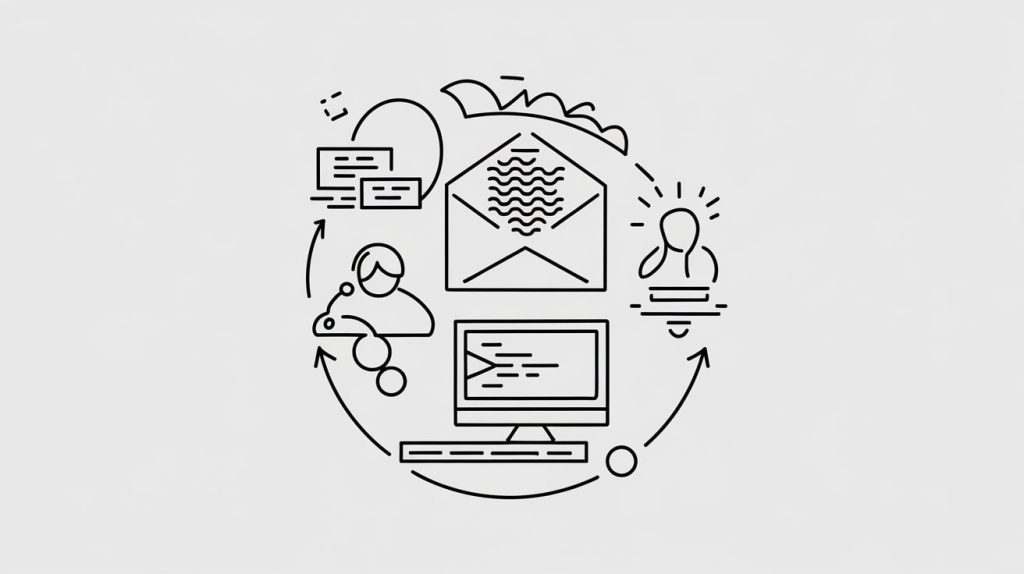
A cold email drip campaign is more than just another tool in your email marketing campaigns—it’s the secret to turning cold prospects into engaged leads. Here’s why it’s a must-have for your outreach strategy:
1. Build Trust Over Time
Persistence pays off, but only if it’s thoughtful. A well-crafted email drip campaign allows you to deliver valuable marketing emails gradually, giving recipients time to familiarize themselves with your company name and offerings. It’s like nurturing a relationship—each touchpoint builds trust without overwhelming the recipient.
Pro tip: Start with an onboarding email introducing your company, follow up with educational content, and end with a compelling final email showcasing social proof.
2. Boost Reply Rates
Most replies don’t happen after the first email. Lead nurturing campaigns rely on follow-ups to ensure no opportunity slips through the cracks. By automating these touchpoints, you keep your sales reps focused on closing deals, not chasing leads.
Pro tip: Craft enticing snippets that tease the email’s value to boost open rates.
3. Save Time and Resources
Manually following up is time-consuming and inefficient. Automating your email marketing campaigns frees up time for strategy, whether it’s refining your landing page or creating new best practices for outreach. Automation ensures consistency and lets you scale like the best of other businesses in your industry.
4. Segment and Personalize
Not all leads are created equal. Drip campaigns let you tailor emails to each lead’s customer journey, using details like past behavior or preferences. By personalizing your approach, you’ll make your audience feel understood, increasing engagement and trust.
Pro Tip: Include a clear unsubscribe button in every email to maintain transparency and protect your reputation.
A cold email drip campaign isn’t just about sending emails; it’s about guiding your audience step-by-step through the buyer journey, earning their trust, and, ultimately, helping you generate revenue. When done right, it turns potential customers into loyal ones who stick around.
Key Elements of a Successful Cold Email Drip Campaign
Building an effective cold email drip campaign requires attention to several critical elements. These factors work together to create a seamless and impactful experience that engages recipients, addresses their needs, and drives meaningful actions.
Personalization: Speak Directly to the Recipient
Generic emails get ignored. Personalization is the backbone of any successful email drip campaign because it makes your outreach feel relevant and thoughtful. By using dynamic fields, you can address recipients by name, mention their company name, and even reference specific pain points or challenges they might be facing. This level of detail signals that your email is not just another mass message but a tailored solution to their needs.
How to Implement Personalization:
- Use CRM data to pull in recipient-specific information, like their industry or recent interactions with your business.
- Reference their goals or issues. For example, “We’ve seen other businesses in [industry] struggle with [specific challenge]. Here’s how we can help.”
- Include personalized insights about their role, team, or company’s growth.
Pro Tip: Personalization isn’t just about names; it’s about relevance. Craft your messaging around the recipient’s customer journey for maximum impact.
Timing and Spacing: Strike the Right Balance
A successful drip campaign respects the recipient’s time. Overloading them with emails can lead to frustration and unsubscribes, while too much delay can cause them to lose interest. The key is finding the sweet spot between follow-ups.
Best Practices for Timing and Spacing:
- Space emails 3–5 days apart to maintain momentum without overwhelming the recipient.
- Limit your sequence to 4–6 emails, with each one offering unique valuable information.
- Time your emails strategically, such as avoiding weekends or holidays when engagement rates tend to drop.
Pro Tip: Use analytics to determine the best-performing send times for your audience.
Clear CTAs: Drive Action with Precision
Every email in your sequence should have one clear, action-oriented goal. Whether it’s to book a call, download a resource, or visit a landing page, the CTA must be concise, visible, and compelling.
CTA Best Practices:
- Use action verbs, such as “Schedule your demo” or “Explore our solution now.”
- Place the CTA where it stands out, either in a bold button or hyperlinked text.
- Align the CTA with the recipient’s stage in the buyer journey. For example, an early email might link to educational content, while later ones could push for a meeting.
Pro Tip: A single, focused CTA is more effective than multiple competing links. Keep it simple to reduce decision fatigue.
Behavior Triggers: Respond to Recipient Actions
Modern email drip campaigns thrive on adaptability. By tracking recipient actions—such as opens, clicks, or replies—you can adjust the sequence in real time. This ensures that your emails remain relevant and aligned with their interests.
How to Use Behavior Triggers:
- If a recipient clicks a link, follow up with an email that dives deeper into the topic they explored.
- When someone replies, pause the automation to ensure your sales rep can respond personally.
- Use non-engagement triggers, such as not opening the last two emails, to prompt a re-engagement email with a fresh angle.
Pro Tip: Use analytics to identify behavior patterns and fine-tune your triggers for better results.
How to Create a Cold Email Drip Campaign That Converts
A cold email drip campaign is not just about sending emails—it’s about crafting a strategic journey that leads your prospects from awareness to conversion.
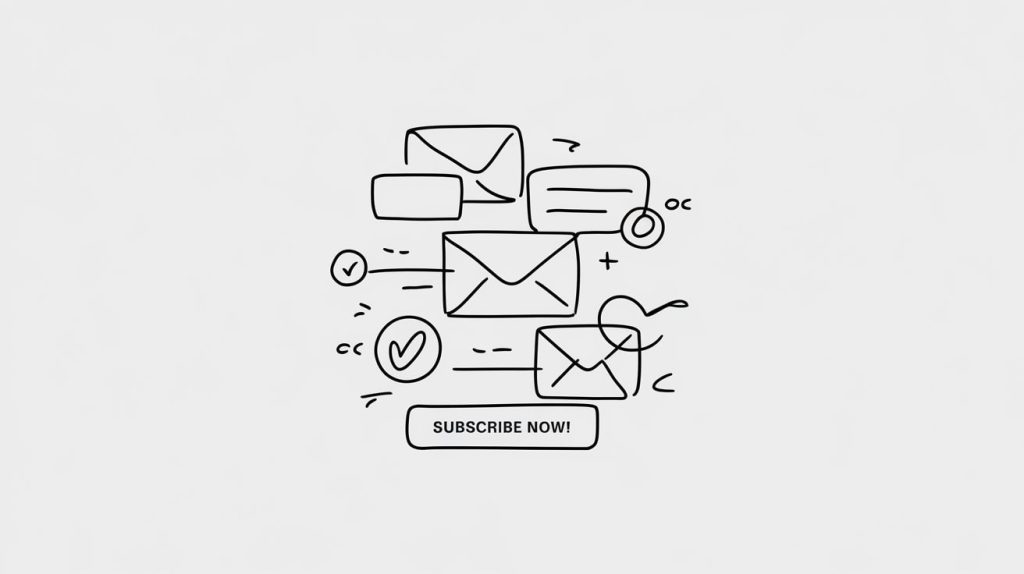
Here’s a detailed guide to each step, ensuring your campaign is both impactful and efficient.
Step 1: Define Your Goals
Start by clarifying the purpose of your campaign. Are you aiming to:
- Generate new leads for your sales team?
- Schedule meetings with prospects?
- Nurture long-term relationships to boost engagement?
Your goals will dictate the tone, structure, and content of your emails. For instance, a campaign focused on lead nurturing may include educational resources, while one aimed at meeting scheduling may focus on urgency and direct CTAs. Align these goals with your overall marketing strategy and ensure they are measurable, such as increasing reply rates by 15% or booking five meetings per week.
Step 2: Build a Clean Email List
Your email list is the foundation of your campaign, and its quality directly impacts its success. Avoid wasting time on invalid or outdated email addresses by using verification tools like Woodpecker’s free email verification. This not only reduces bounce rates but also protects your sender reputation.
Once you’ve cleaned your list, segment it into groups based on criteria like industry, job title, or stage in the customer journey. Segmentation ensures your messaging is relevant, increasing the likelihood of engagement. For example, a welcome email for new customers should differ from re-engagement emails for inactive leads.
Step 3: Craft Your Email Sequence
Design your drip sequence with a clear structure that guides recipients through the process while adding value at every step:
- First Email: Introduce yourself and your company name, focusing on how you can solve their pain points. Be concise and highlight the unique value you offer.
- Follow-Up 1: Address potential objections or doubts. For instance, include FAQs or showcase how you’ve helped other businesses overcome similar challenges.
- Follow-Up 2: Add social proof, such as customer success stories, testimonials, or case studies, to build credibility.
- Final Email: Create urgency with a limited-time offer, such as a coupon code or discount code, and include a clear call to action like scheduling a demo or booking a meeting.
Every email should feel cohesive, with each one building upon the last to maintain interest and engagement.
Step 4: Use Automation Tools
Manual follow-ups are time-consuming and prone to errors. Automate your email drip campaigns with platforms like Woodpecker. Automation tools allow you to:
- Schedule emails at optimal intervals.
- Personalize messaging using dynamic fields.
- Adjust sequences based on recipient behavior, such as opens or clicks.
This frees up your team’s time while ensuring consistent outreach. Additionally, automation platforms provide insights into performance metrics, enabling you to fine-tune your strategy.
Step 5: Test and Refine Your Campaign
No campaign is perfect on the first try. Testing allows you to identify what works and what doesn’t. Use A/B testing to experiment with:
- Subject lines: Test different phrasing to see which gets more opens.
- Email copy: Compare concise messaging with longer, story-driven emails.
- CTAs: Try different action phrases, like “Book Your Free Demo” versus “Schedule a Call.”
Monitor performance metrics such as open rates, click-through rates, and replies. Based on the results, refine your emails to improve engagement and conversion rates.
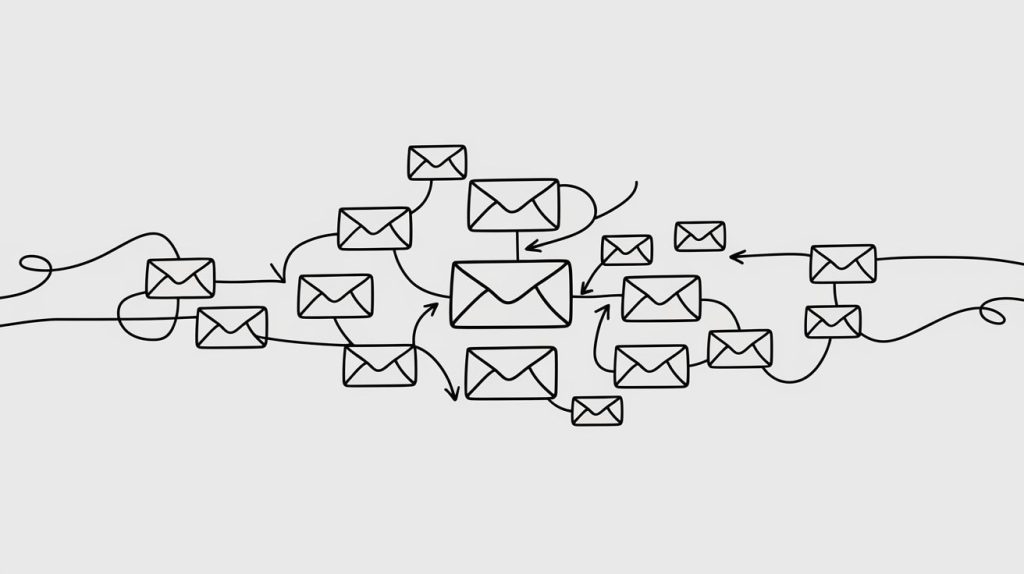
Step 6: Segment Your Audience
Not every prospect is at the same stage of the buyer journey, and your emails should reflect that. For instance:
- New leads may require introductory emails that explain your value proposition.
- Warm leads might need proof of results, like case studies.
- Dormant leads could benefit from re-engagement emails offering fresh incentives.
Segmentation ensures that each email resonates with the recipient’s specific needs and increases the chance of a positive response.
Step 7: Personalize Every Touchpoint
Personalization is no longer optional—it’s essential. Use email personalization tools to address recipients by name, reference their company name, and mention specific challenges or goals relevant to them. This attention to detail shows that your outreach is intentional and thoughtful, not just another generic marketing email.
For example:
- Instead of “Hi there,” use “Hi [Recipient’s Name],” followed by a mention of their role or recent achievements.
- Reference how your solution aligns with their CRM data or past purchase history.
The more tailored your messaging, the more likely you are to build trust and engagement.
Step 8: Optimize Timing and Frequency
The timing and frequency of your emails can make or break your campaign. Sending too often can overwhelm recipients, while long gaps may lead to disinterest.
Best Practices for Timing:
- Space emails 3–5 days apart to keep your brand top-of-mind without feeling intrusive.
- Avoid sending emails during weekends or holidays when engagement rates tend to drop.
Use your platform’s analytics to identify optimal send times based on your audience’s behavior and preferences.
Step 9: Monitor and Adapt Based on Behavior
Drip campaigns thrive on adaptability. Track how recipients interact with your emails and adjust your sequence accordingly. For example:
- If a recipient clicks on a link in your email, follow up with content that dives deeper into that topic.
- If someone doesn’t open your emails, try changing the subject line or sending a re-engagement email.
Behavior-based triggers keep your emails relevant and ensure you’re addressing each recipient’s interests.
Step 10: Provide Value at Every Step
Every email should serve a purpose beyond promotion. Whether it’s offering educational content, sharing a good example of success, or addressing a common pain point, your emails should consistently provide valuable information. This builds trust, strengthens your relationship with recipients, and sets the stage for conversions.
Common Mistakes to Avoid in Cold Email Drip Campaigns
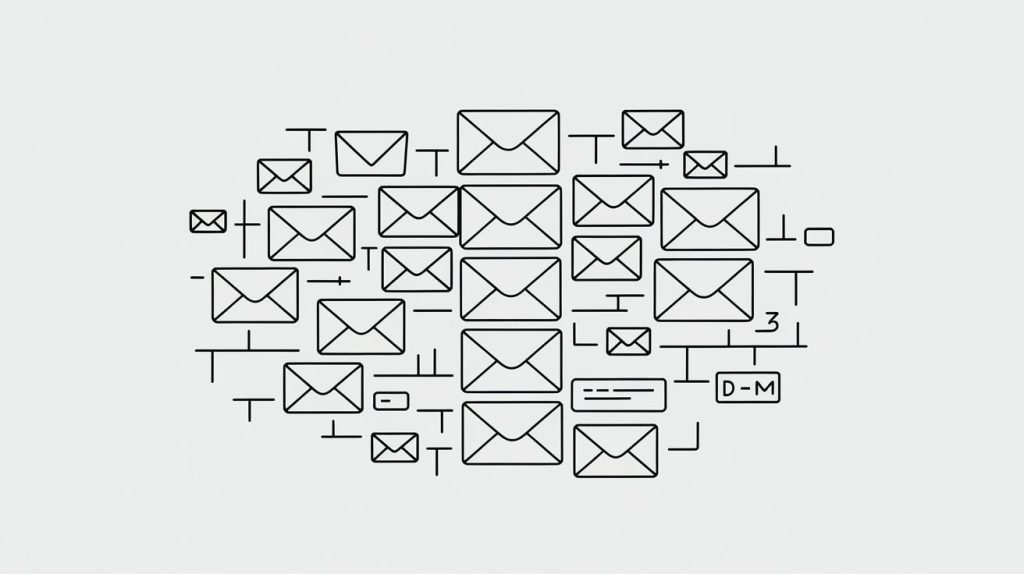
Even the most well-intentioned cold email drip campaign can fall flat if common pitfalls aren’t avoided. By recognizing these mistakes, you can craft a campaign that engages your audience and drives results.
1. Overloading Recipients
Sending too many emails in a short period is a surefire way to overwhelm and irritate your audience. Bombarding recipients with constant follow-ups can make your outreach feel pushy and spam-like, increasing the likelihood of unsubscribes or complaints.
Why It Matters:
- Too frequent emails can damage your sender reputation.
- Recipients may flag your emails as spam, reducing deliverability.
How to Avoid It:
- Space emails 3–5 days apart to maintain interest without being intrusive.
- Use automation tools to stagger delivery and monitor recipient behavior before sending additional follow-ups.
2. Neglecting Personalization
Generic emails scream mass messaging, and recipients can spot them a mile away. Failing to tailor your emails to the recipient’s name, role, or pain points makes it easy for them to hit “delete.”
Why It Matters:
- Personalization boosts engagement by making your emails feel relevant and thoughtful.
- Tailored content shows recipients you understand their needs, fostering trust.
How to Avoid It:
- Use dynamic fields to insert names, company names, or other personalized details.
- Reference specific challenges or goals your recipient may have, based on CRM data or past interactions.
3. Weak CTAs
A vague or overly broad call-to-action can confuse recipients and leave them unsure of what to do next. Without a clear direction, even the best-crafted email can fail to achieve its goal.
Why It Matters:
- Ambiguous CTAs lead to low click-through and conversion rates.
- A confused recipient is less likely to engage with your brand.
How to Avoid It:
- Make your CTAs direct and actionable, such as “Schedule a Demo” or “Download the Case Study.”
- Limit each email to one CTA to reduce decision fatigue and keep the focus clear.
4. Ignoring Analytics
Launching a campaign without monitoring its performance is like flying blind. Failing to track metrics like open rates, clicks, or replies prevents you from understanding what’s working and what needs improvement. Check out the top analytics tools.
Why It Matters:
- Analytics provide valuable insights into the effectiveness of your campaign.
- Without data, you can’t optimize subject lines, email content, or timing.
How to Avoid It:
- Use email marketing tools with built-in analytics to track key performance indicators.
- A/B test different subject lines, email designs, and CTAs to refine your approach.
Avoiding these mistakes ensures your cold email drip campaign stays effective and resonates with your audience. By respecting recipient boundaries, personalizing your outreach, crafting strong CTAs, and leveraging analytics, you’ll maximize engagement and drive conversions.
How Woodpecker Helps You Master Cold Email Drip Campaigns
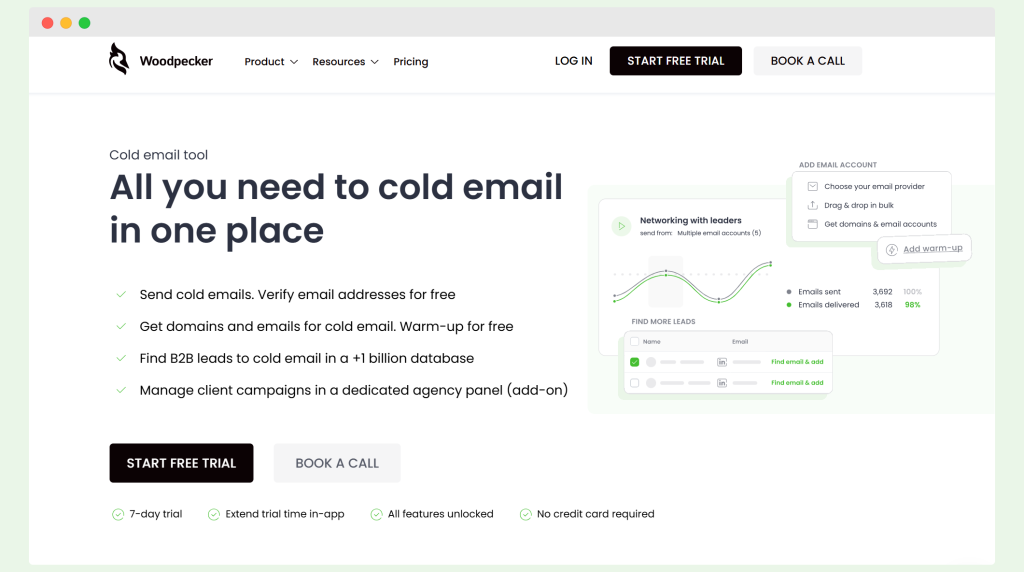
Creating an effective cold email drip campaign can be a daunting task without the right tools. Woodpecker streamlines the process, offering powerful features that help you engage leads, improve deliverability, and optimize every aspect of your campaign.
Dynamic Personalization
Woodpecker allows you to craft highly tailored emails with dynamic fields that adapt to each recipient. From inserting names and company names to referencing specific pain points or goals, the platform makes every email feel personal. Additionally, condition-based triggers enable you to send follow-ups that align with each recipient’s actions, like clicking a link or not responding.
How It Helps:
- Keeps your emails relevant and engaging.
- Builds trust by showing recipients you understand their needs.
Automated Follow-Ups
Consistency is key in a drip email campaign, and Woodpecker excels at automating your follow-ups. You can design sequences that adjust based on recipient behavior, such as skipping emails for those who’ve replied or altering the message for unengaged leads.
How It Helps:
- Saves time by automating repetitive tasks.
- Ensures no opportunity slips through the cracks.
Deliverability Tools
Deliverability can make or break a campaign. Woodpecker offers robust features like email verification, inbox rotation, and warm-up tools to ensure your emails avoid spam folders and land directly in recipients’ inboxes.
How It Helps:
- Protects your sender reputation by avoiding bounces and spam complaints.
- Improves engagement rates by ensuring your emails are seen.
Advanced Analytics
Woodpecker’s real-time analytics dashboard provides insights into your campaign’s performance. Track metrics like open rates, click-through rates, and reply rates, and use this data to refine your strategy.
How It Helps:
- Identifies which emails resonate most with your audience.
- Guides adjustments for better engagement and higher conversions.
Why Cold Email Drip Campaigns Are a Must-Have
Cold email drip campaigns aren’t just a marketing trend—they’re your shortcut to turning strangers into superfans and casual prospects into loyal clients. With every carefully timed follow-up, you’re not just selling; you’re building trust, solving problems, and making sure your name stays top of mind.
But let’s face it, without the right tool, even the best strategy can fizzle out. Enter Woodpecker—the ultimate wingman for your outreach. It’s not just about automating emails; it’s about personalizing them, dodging spam folders, and delivering messages that actually get replies. Think of it as your unfair advantage in the inbox.
So, are you ready to ditch the guesswork and start creating drip campaigns that actually deliver? Let Woodpecker do the heavy lifting and watch your outreach take flight. Try it today—your prospects are waiting.

